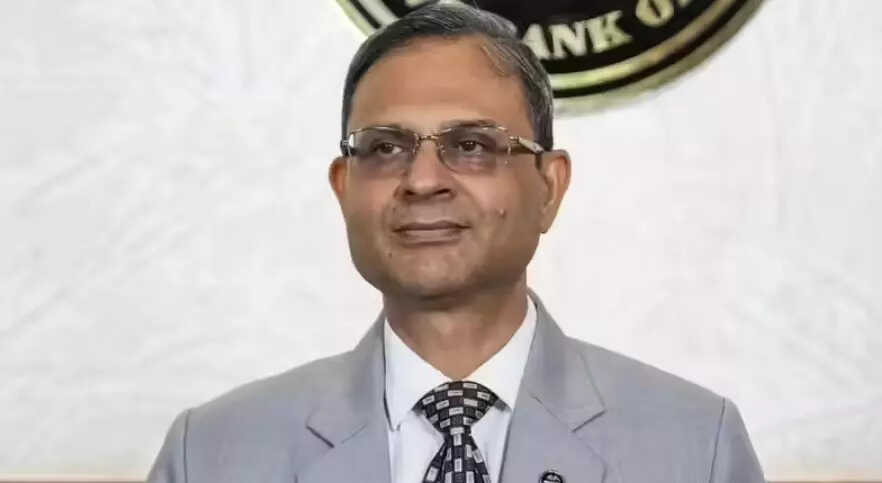Navigating Choppy Waters: How the RBI Plans to Shield India from Tariff Tides
The global economy feels a bit like the ocean these days – beautiful and powerful, but prone to unpredictable swells. Rising trade tensions and potential tariff hikes are definitely creating some significant waves, and the Reserve Bank of India (RBI) is keeping a watchful eye on the horizon, ready to steer India’s economic ship through any coming storms.
The big question on everyone’s mind is: how will these global headwinds affect us here at home? No one wants to see inflation surge or economic growth stall because of factors beyond our control. That’s where the RBI’s strategic planning comes into play.
Understanding the Tariff Threat
Tariffs, essentially taxes on imported goods, can act like a domino, impacting everything from consumer prices to business investments. If imported components become more expensive, manufacturers might have to raise prices, potentially dampening demand. On a larger scale, escalating trade wars could disrupt global supply chains, impacting exports and overall economic activity. The complexities are immense, with countless possible ripple effects.
The RBI isn’t just idly observing. They’re actively analyzing various scenarios and preparing contingency plans to mitigate the potential negative impacts. This isn’t about reacting; it’s about proactive risk management. It’s about building resilience into the Indian economy.

RBI’s Proactive Approach to Tariff Impact Mitigation
The RBI’s toolkit is surprisingly diverse. It includes everything from managing currency fluctuations to adjusting interest rates, all aimed at maintaining price stability and supporting sustainable economic growth. Think of it like a finely tuned engine, with different components working in harmony to keep the economy running smoothly.
One crucial aspect is managing the exchange rate. A stable rupee helps to cushion the impact of tariff hikes by preventing imported goods from becoming excessively expensive. The RBI has shown a willingness to intervene in the currency markets when necessary, ensuring a stable and predictable environment for businesses.
Furthermore, the RBI can use its monetary policy tools, such as adjusting interest rates, to influence inflation and economic activity. Lowering interest rates, for example, can encourage borrowing and investment, boosting economic growth. Finding the right balance is key, as too much or too little intervention could have unintended consequences. The central bank is always walking a tightrope to foster financial stability.
Beyond Immediate Responses: Building Long-Term Resilience
While immediate responses are essential, the RBI is also focused on building long-term resilience. This involves promoting financial stability, strengthening the banking sector, and encouraging sustainable economic practices. These are not quick fixes, but foundational changes that make the Indian economy more robust and less vulnerable to external shocks.
This also includes supporting domestic industries and fostering a more competitive business environment. By empowering local businesses to thrive, India can reduce its dependence on imports and become more self-reliant.
Related to this topic, understanding the impact of global crude oil fluctuations is also crucial to India’s economy. You can read more about the role of the RBI in stabilizing the economy during these periods here.
A Cautious but Confident Stance
The Governor of the Reserve Bank of India has signaled a readiness to act decisively, emphasizing that the central bank has the tools and the willingness to use them to protect the Indian economy. This message of preparedness is crucial for maintaining market confidence and preventing panic. It’s reassuring to know that there’s a steady hand at the helm, guiding us through these uncertain times.
Of course, challenges remain. The global economic landscape is constantly evolving, and new threats are always emerging. But with a proactive and adaptable approach, the RBI is well-positioned to navigate these challenges and safeguard India’s economic future. The road ahead may be bumpy, but the RBI’s commitment to stability and growth provides a solid foundation for continued progress.
Conclusion: Navigating Uncertainty with Vigilance
The RBI’s proactive stance on managing the tariff impact demonstrates its commitment to safeguarding India’s economic interests in an increasingly volatile global environment. By employing a combination of short-term interventions and long-term resilience-building strategies, the central bank aims to shield the Indian economy from the worst effects of trade tensions and promote sustainable growth. This vigilance and preparedness are crucial for navigating the uncertainties ahead and ensuring a stable and prosperous future for India.







